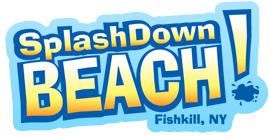How sanitary are water park features anyway? AOL goes undercover to sample the water at some of the nation’s top water parks.
When temperatures soar, tens of thousands of Americans push through the turnstiles at water parks across the country, seeking to cool off at a corkscrewing waterslide or a thundering wave pool. But just how safe is that water they’re splashing in?
The first water park in the nation opened in Florida in 1977. By 2006, 78 million people in North America (the U.S., Canada and Mexico) had visited a water park. But in the 33 years that water parks have been operating, there has been little governmental oversight. Many states have no specific laws or regulatory agencies governing water quality in water parks.
In 1998, an outbreak of E. coli at White Water Park near Atlanta resulted in illness for 26 children aged 12 and under, seven hospitalizations for kidney failure, and the death of one child. According to the Center for Disease Control, this tragedy marked an increase in national awareness of the importance of recreational water quality. As for the park itself, it installed automated testing systems throughout and increased chlorine levels from the recommended 2 parts per million to 3.5.
According to the Center for Disease Control, Recreational Water Illnesses (RWIs) traced to water parks, swimming pools and water play areas can be caused by a single person with diarrhea who contaminates the entire swimming area. When a swimmer swallows water in a water feature that has been contaminated with E. coli bacteria, the result can be serious and even deadly.
To check water quality at five water parks across the country, AOL sent five undercover reporters to test three water features at each park. The reporters purchased and used Watersafe® Rapid Bacteria Pool Test Strips, which test for the presence of E. coli, Pseudomonas aeruginosa, and many other coliform (of which E. coli is a species) and non-coliform bacteria. AOL chose this kit because it is readily available.
According to Tom Round, Vice President of Business Development at Silver Lake Research Corporation, the Watersafe® product “detects a broad range of bacteria, including E. coli, Pseudomonas, Shigella, and Enterobacter. The presence of any of these bacteria in a swimming pool indicates a possible unsafe condition, such as inadequate disinfection, that could lead to recreational water illness in bathers.” The test strips display results quickly, whereas the results of lab tests, which are certainly more thorough and more accurate, may not be available for days — and may not be convenient for anyone intending to take a dip right away.
Whenever possible, the reporters also interviewed park personnel on the methods used to maintain water quality.
Splashdown Beach, Fishkill, New York
Though not one of America’s largest parks (it’s billed as “America’s Biggest Little Water Park”), AOL chose SplashDown Beach because its intimate size attracts families with young children. (The park had ample signage about the importance of waterproof swim diapers to minimize leakage.)
The test was done on around noon on a busy Saturday in late June when the attendance numbered about 800. The park looked well maintained and clean.
Testing and Results
The water was tested in three locations: the Wave Pool (mixed ages), Shipwreck Lagoon (a pirate-themed attraction for toddlers), and Cowabunga Falls (a thrill ride for older kids, teens and adults).
All three tests were negative.
Water Park Maintenance and Safety
Steve Turk, SplashDown Beach’s president and chief executive, stated: “We take [water monitoring] so seriously. Lifeguard and maintenance teams check every attraction every hour, so each one gets tested twice each hour. On busy days, testing is done every half-hour as well. Computer-monitored probes track water quality continuously at each attraction and automatically adjust chemicals. “Water quality is everything,” said Turk, who also routinely conducts “surprise” tests.
Who Monitors the Park?
As a result of a cryptosporidium-fueled outbreak at an upstate New York water park, New York State requires the use, in addition to chlorine, of ultra-violet or ozone treatment of water in water parks. Tom Allocco, a spokesman for the New York State Department of Health, said the State Sanitary Code governs water quality at water parks in the state by setting regulations, but county health departments are responsible for monitoring and enforcing them. Inspection frequencies vary, according to county health departments, he said, but at a minimum, they are conducted at least once a year. State law requires that disinfectant and pH levels be tested at least three times a day, Allocco said.
Turk said he was aware that his park exceeded state regulations. “I’m fastidious,” he said. “That’s the only way you keep water crystal clear.”
